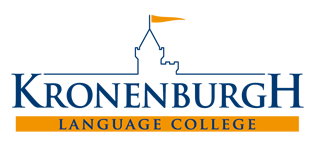Common European Framework Reference (CEFR) is used at Kronenburgh
The Common European Framework Reference (CEFR) is an international standard for describing the level of language proficiency. This is based on the reading, writing, listening and speaking of the various language components. The level of language proficiency is displayed on a six-point scale, from A1 for beginners to C2 for the level of native speakers.
Thanks to the CEFR, it is possible to compare different degrees with each other.
Schools can indicate which language proficiency level is required to fully participate in education.
Many organizations also use the CEFR when recruiting new employees to display the desired language level to enable proper functioning.
Even when people want to live or work in another country, the Common European Framework of Reference is used to indicate the desired language level.
The levels in the Common European Framework Reference (CEFR)
The Common European Framework divides learners into three broad divisions that can be divided into six levels; for each level, it describes what a learner is supposed to be able to do in reading, listening, speaking and writing.
A Basic User: A1 Breakthrough or beginner / A2 Waystage or elementary
B Independant user: B1 Threshold or intermediate / B2 Vantage or upper intermediate
C Proficient user: C1 Effective operational proficiency or advanced / C2 Mastery or proficiency
Read more about CEFR.
Higher CEFR levels at Kronenburgh
Kronenburgh Language College focuses on the higher CEFR levels. Most people are already past levels A1 and A2. So we start at B1 or higher.
To refresh your English level, there is the Cambridge English upper Intermediate course that takes you to level B1 (ready for B2).
From this point on, you can choose Business English, IELTS or Cambridge First. In these streams you can proceed to levels B2, C1 and C2.



